


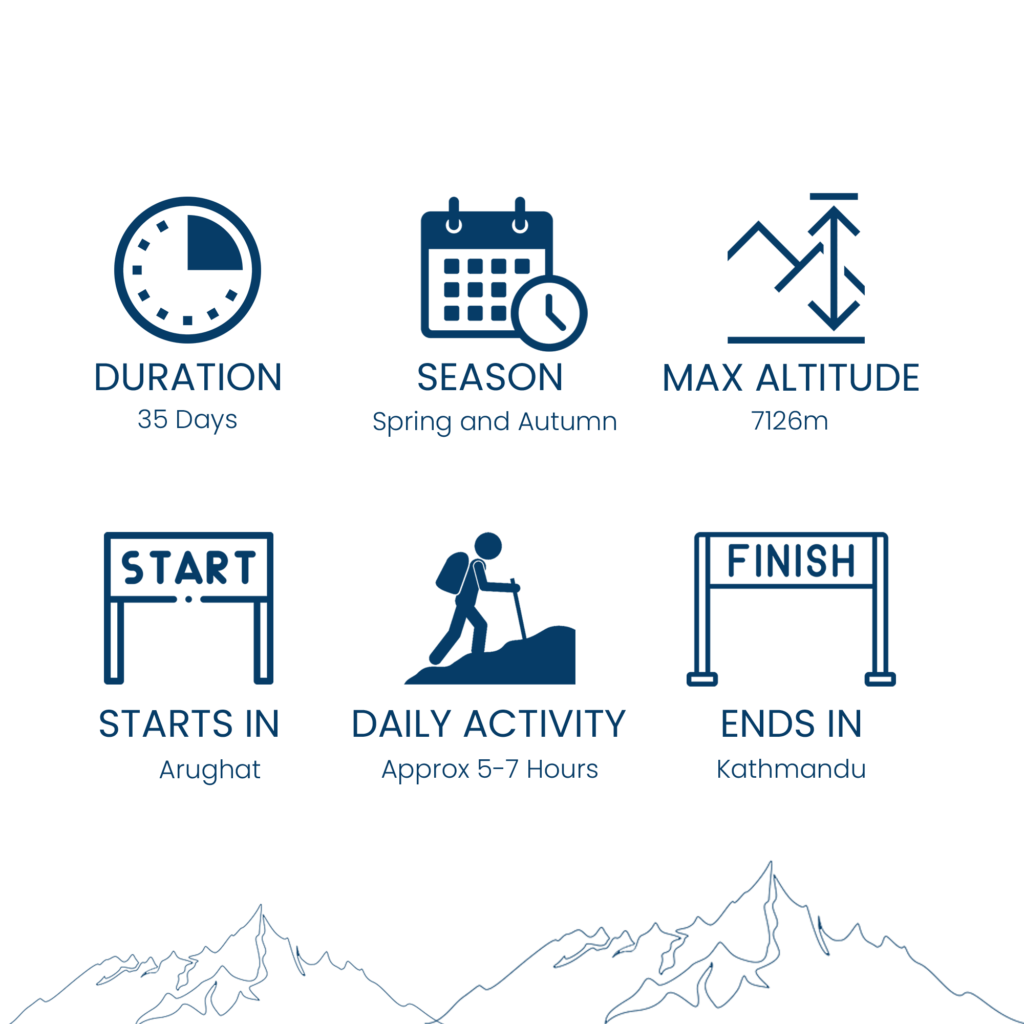
1954 – First summit of Baruntse by Coli Todd and Geof Harrow via the South Ridge led by Sir Edmund Hillary
1980 – First summit through east ridge by Spanish Expedition team led by Juan Jose Díaz Ibañez
2015 – Expedition Himalaya organized Baruntse Expedition for Japnese Expedition Team
Baruntse, at 7,129 meters (23,289 feet), is one of the popular 7000ers compared to other 7000ers in Nepal, crevassed glaciers and steep climb makes it a bit more challenging; altitude makes difficulty compared to other smaller peaks. The Southeast Ridge is the most popular route up Baruntse. The journey begins in Lukla and proceeds down the Barun Valley path. It takes about 9-12 days of trekking through several Sherpa communities to reach the base camp.
The climb takes about two weeks to complete, and there are 2 high camps along the route. Camps are located at relatively higher elevations; Base Camp at 5,231 m (17,162 ft), Camp I at 6150 m (20,177 ft) and Camp II at 6415 m (21,047 ft). The final push to the peak begins from CII.
Baruntse is a challenging mountain to scale due to its steep icy slopes, crevasses, and exposed rock sections en route. On the Southeast Ridge, you’ll face ice slopes and ridges with angles of up to 45 degrees, and then a final push to the peak will involve ice with angles of up to 65 degrees. Extreme weather, such as strong winds, low temperatures, and heavy snowfall, is another challenge that climbers face at high altitude. However, for those who are up for the challenge, it provides breathtaking views and the chance to climb one of the world’s highest peaks.

Baruntse Base Camp is situated at an altitude of approximately 5,300 meters (17,388 feet) above sea level. Serving as the starting point for expeditions to Baruntse, this base camp provides climbers with a strategic location for acclimatization and initial preparations. It offers essential facilities, including accommodation tents and dining areas, serving as a hub for organizing gear and planning the ascent of Baruntse.

Baruntse Expedition Camp 1 is strategically positioned at an approximate altitude of 6,065 meters (19,900 feet) above sea level. The climbing route from the base camp to Camp 1 involves navigating through the beautiful Barun Glacier and ascending gradually. Climbers will encounter crevasses, seracs, and icy terrain during this phase of the ascent. The route demands careful navigation and technical skills, as climbers negotiate the dynamic glacial features. Camp 1 serves as a crucial acclimatization point before climbers progress to higher camps, ultimately preparing for the challenging summit bid on Baruntse.

Baruntse Expedition Camp 2 is strategically situated at an approximate altitude of 6,500 meters (21,325 feet). The climbing route from Camp 1 to Camp 2 involves ascending through a challenging section of the mountain, navigating steep slopes, and overcoming technical terrain.

Baruntse Expedition Summit Day marks the pinnacle of the climb, with the summit situated at an elevation of approximately 7,129 meters (23,389 feet). The climbing route from the higher camps to the summit involves traversing a challenging ridge that combines technical rock and ice sections. Climbers face steep slopes, narrow ridges, and potential exposure to harsh weather conditions. The ascent requires a culmination of skills acquired during the expedition, including ice and rock climbing proficiency. The final push to the summit demands peak physical and mental endurance, navigating through the thin air with diminishing oxygen levels. Climbers are rewarded with awe-inspiring panoramic views of the Himalayan peaks upon reaching the summit of Baruntse. The descent retraces the same route, with careful navigation and attention to safety protocols. Overall, the summit day climbing route on Baruntse Expedition is a demanding yet gratifying endeavor for mountaineers seeking to conquer this challenging Himalayan peak.























In addition to the expeditions listed above, we have a rich history of organizing over 100 peak climbing expeditions and guiding more than 1000 individuals on treks, which are not included in the aforementioned list.


































Preparing for a challenging expedition requires assembling a comprehensive array of essential gear, encompassing a durable backpack, weather-resistant tent, cozy sleeping bag with an insulated sleeping pad, and a reliable stove for cooking sustenance on the go; navigation tools like a map, compass, and GPS device ensure a safe journey, while a well-stocked first aid kit, emergency shelter, and multi-tool provide security in unforeseen circumstances; carefully chosen clothing layers, including waterproof rain jackets, trekking socks, and sturdy hiking boots, offer protection from the elements, complemented by trekking poles, a backpack rain cover, and dry bags for added resilience against inclement weather.
CLICK THE PICTURE FOR MORE INFORMATION

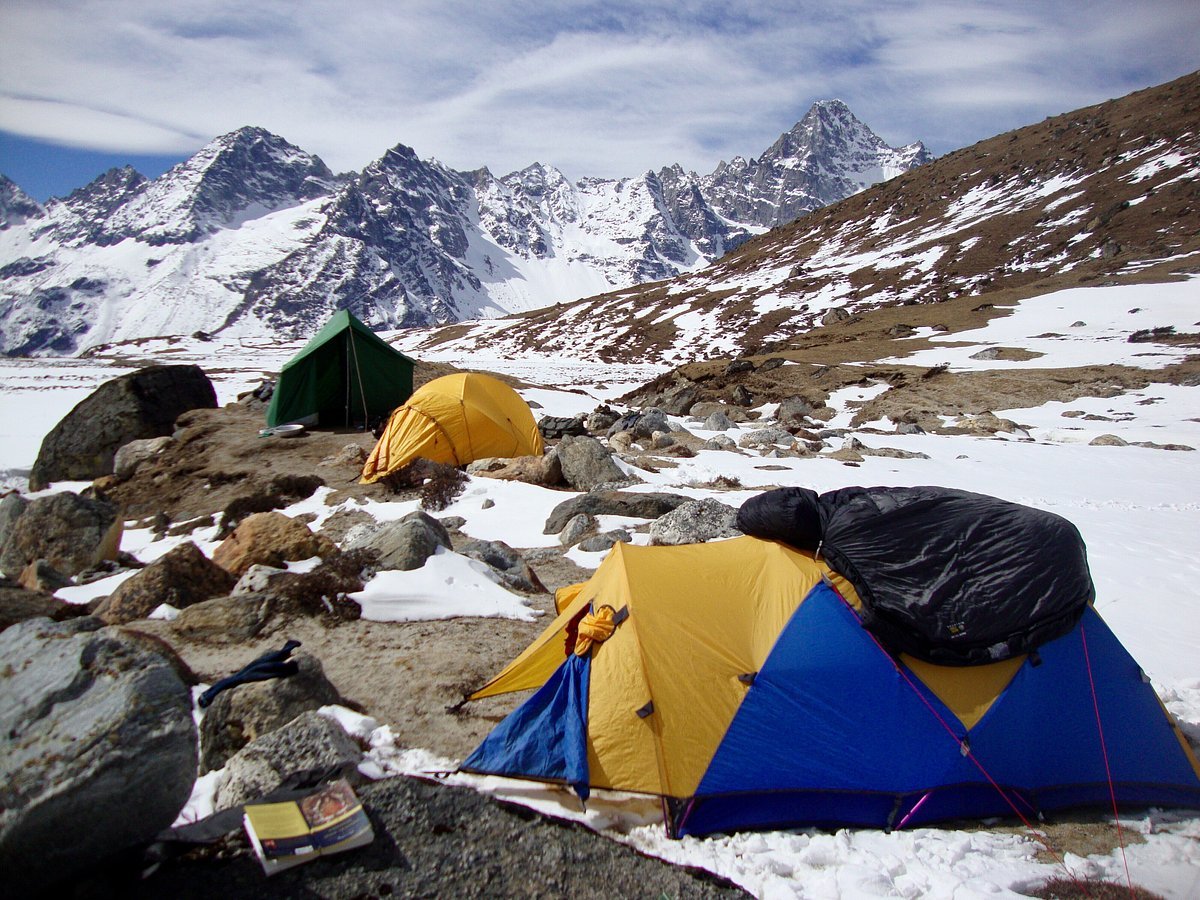
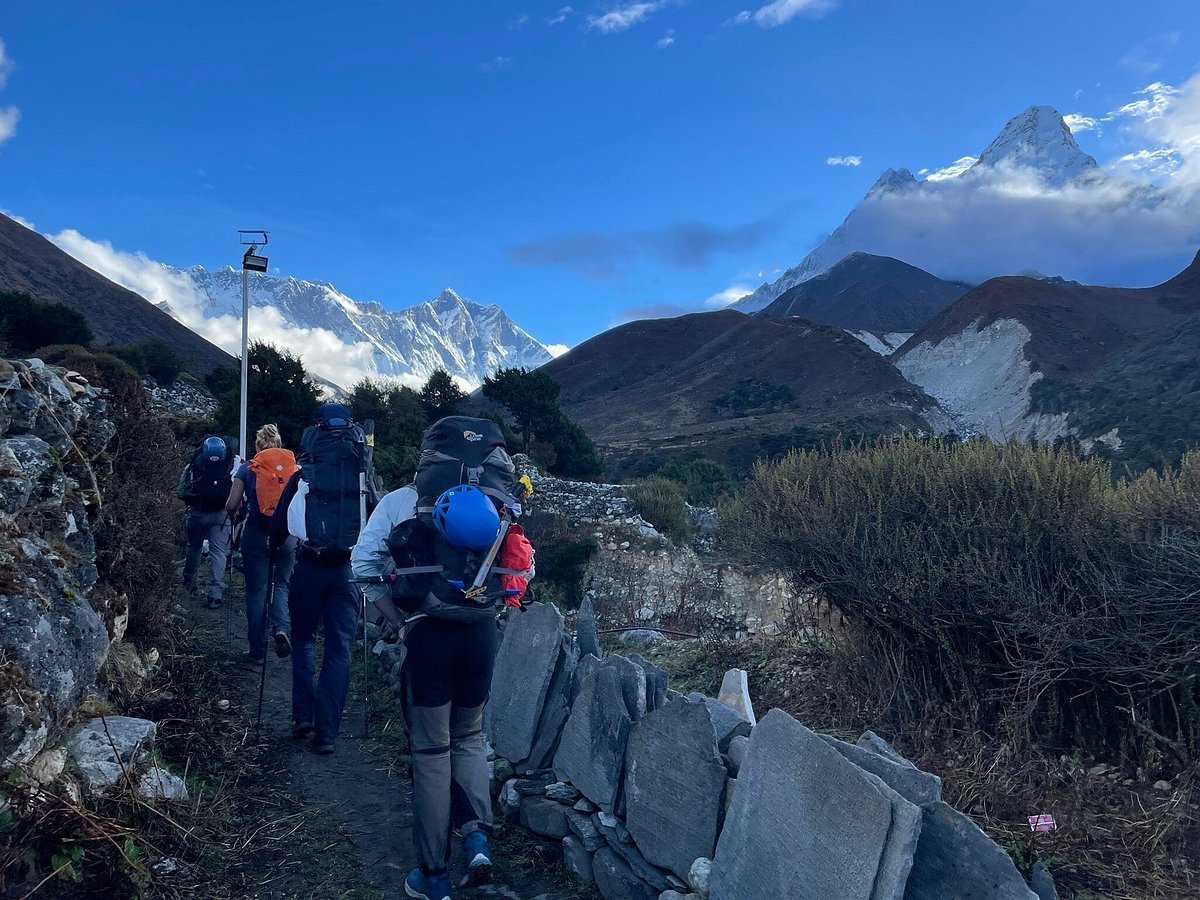
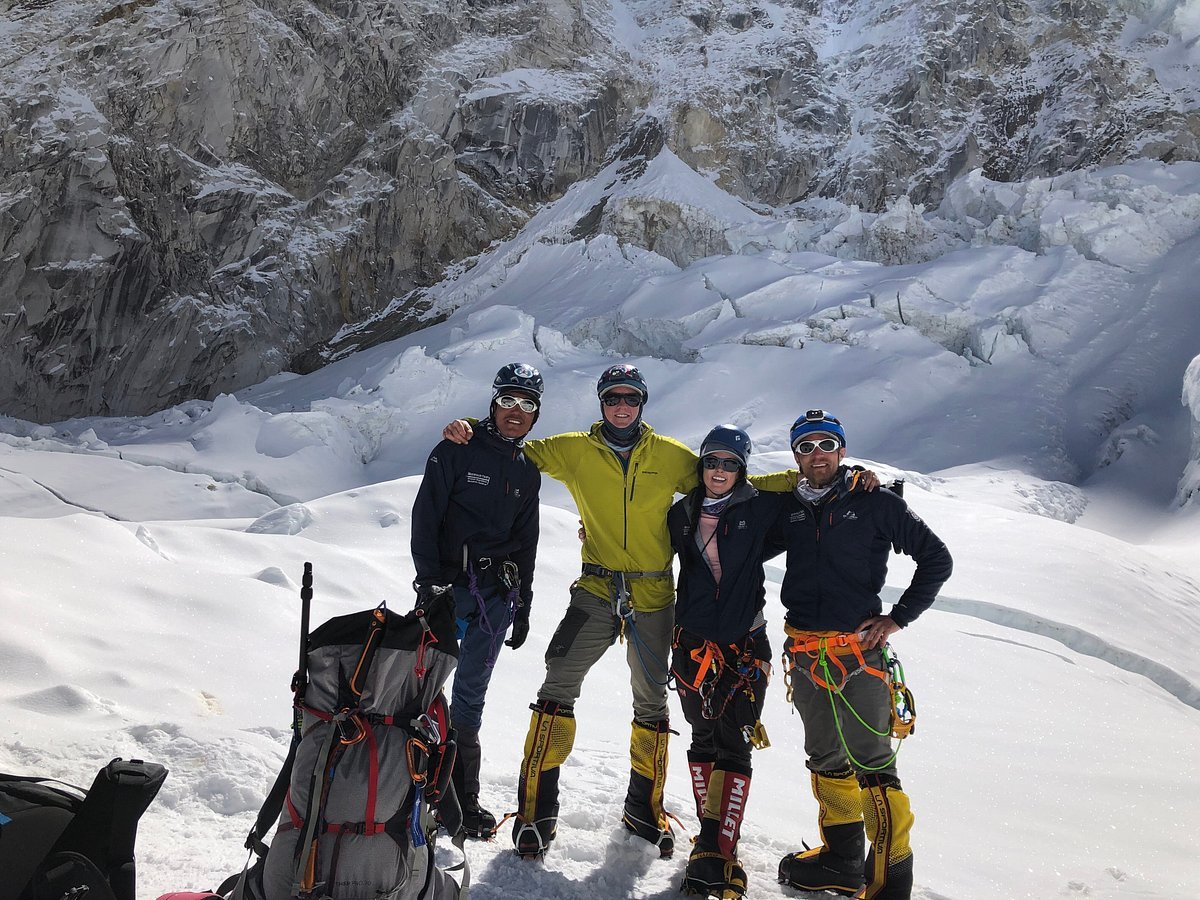
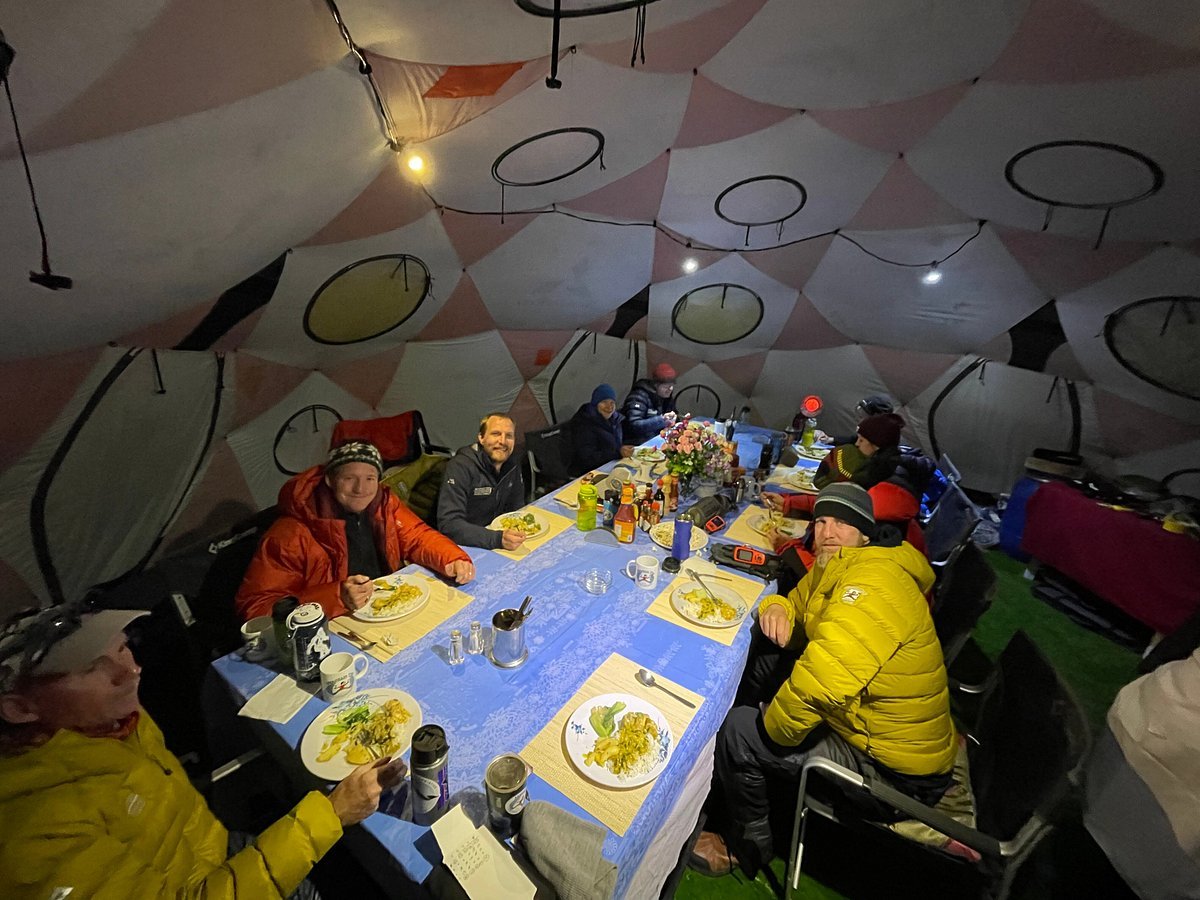

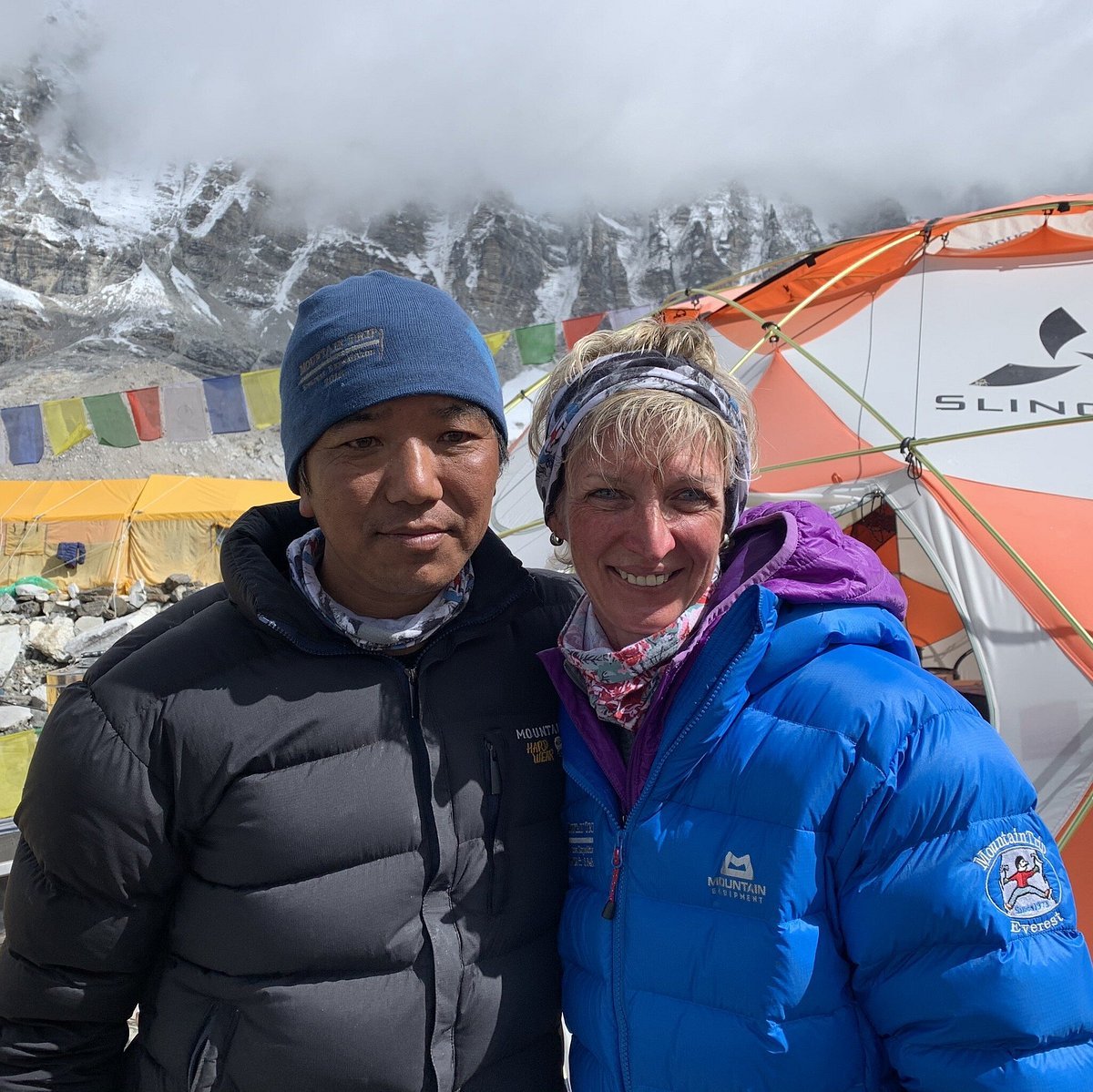

Peak fitness is essential. Train with hikes, carrying gear. Personal Sherpas are optional; porters handle group equipment. Individualized advice for mental and physical preparation is available.

Pre-expedition medical examination is recommended. Dental checks are crucial due to pressure changes at higher altitudes.

Prior high-altitude and mountaineering experience is required for eight-thousander expeditions. Training programs for newcomers are offered. For seven-and six-thousander expeditions, experience on four-thousander peaks is advisable.

Months of physical and mental preparation are necessary. Exercise, diet, and rest are key. Free world-class training programs for Everest climbers are available, along with exclusive discounts.

Months of training are required for fitness and technical climbing experience. Climbing lower peaks familiarizes climbers with equipment and terrain. Expedition training programs are offered in Europe and the US.

Climb lower peaks for altitude adaptation. Tailor-made programs prepare climbers for 8000er expeditions.

Expedition Himalaya, a veteran of Mount Everest and Himalayan expeditions, are poised to make climbing the Himalayan range a safe and unforgettable experience.
© 2024 Developed by Digital Raghu.